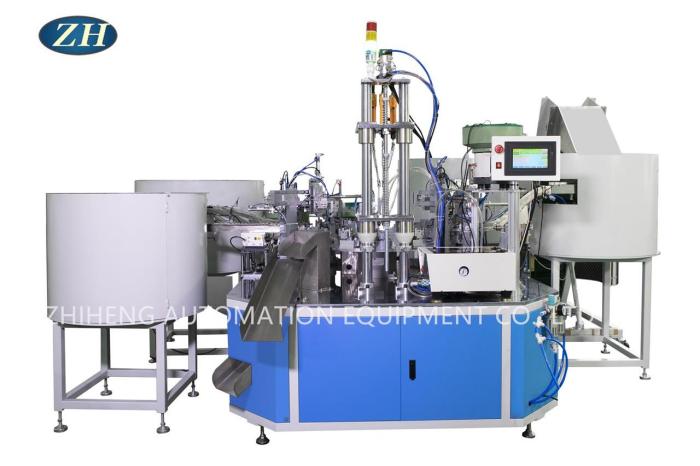- English
- Español
- Português
- русский
- Français
- 日本語
- Deutsch
- tiếng Việt
- Italiano
- Nederlands
- ภาษาไทย
- Polski
- 한국어
- Svenska
- magyar
- Malay
- বাংলা ভাষার
- Dansk
- Suomi
- हिन्दी
- Pilipino
- Türkçe
- Gaeilge
- العربية
- Indonesia
- Norsk
- تمل
- český
- ελληνικά
- український
- Javanese
- فارسی
- தமிழ்
- తెలుగు
- नेपाली
- Burmese
- български
- ລາວ
- Latine
- Қазақша
- Euskal
- Azərbaycan
- Slovenský jazyk
- Македонски
- Lietuvos
- Eesti Keel
- Română
- Slovenski
- मराठी
- Srpski језик
Working principle of automatic assembly line
2024-12-27
Automatic Assembly Line refers to the use of automation technology, through the combination of various equipment and mechanical devices to complete the assembly of products. The following is a detailed introduction to the automated assembly line:
一、 the working principle
Transfer system: The transfer system is a key component of the automated assembly line, which is responsible for the automatic transfer of parts between stations. The transmission system is usually composed of conveyor belt, conveyor, mechanical arm, etc.
Conveyor belt: The motor drives the roller, so that the product on the conveyor belt can move in a specific direction at a set speed.
Conveyor: Through the chain or belt form, the product from one station to the next station.
Robot arm: can achieve the precise handling of large weight or complex shape products.
Fixture: Fixture is used to hold and position parts, making the assembly process more accurate and efficient. The fixture is usually composed of a fixture base, a fixture arm and other components, which can fix the parts and make them do not shift or shake during assembly.
Sensors and inspection equipment: Automated assembly lines need to use a variety of sensors and inspection equipment to obtain relevant information during the assembly process, and to provide feedback and control. The sensor can detect the location, size, shape and other characteristics of the parts, as well as detect the pressure, torque and other parameters during the assembly process. The inspection equipment is used for the quality inspection of the assembled products to ensure that the products meet the requirements.
Control system: The control system is the core of the entire automated assembly line, which through programming and control algorithms, centralized control and coordination of the transmission system, fixture, sensor, etc. The control system can accurately control the assembly speed, force, Angle and other parameters according to the preset process requirements to ensure the consistency and quality of the assembly.
二、 Advantages
Increased production efficiency: Automated assembly lines can greatly improve production efficiency because machines can complete a large amount of assembly work in a short period of time without the need for rest and recovery as human workers.
Reduce manufacturing costs: Through automated assembly lines, labor costs can be reduced, and the defect rate and scrap rate of products can be reduced, thereby reducing manufacturing costs.
Improve product quality: The automated assembly line can improve product quality by ensuring that each product meets the quality requirements through precise control and inspection.
Flexibility: Automated assembly lines can be adjusted and configured according to different product and process requirements to suit different production needs.





